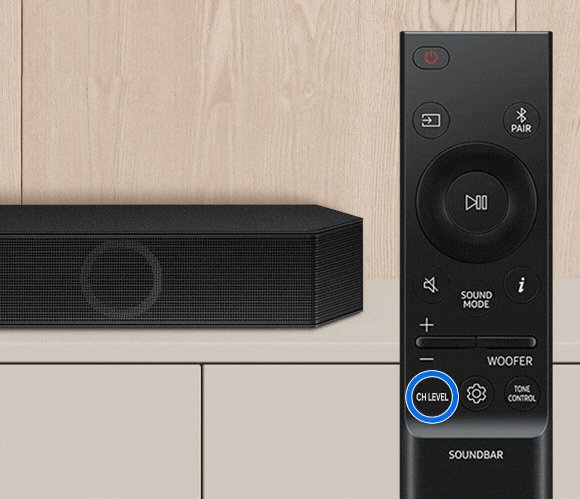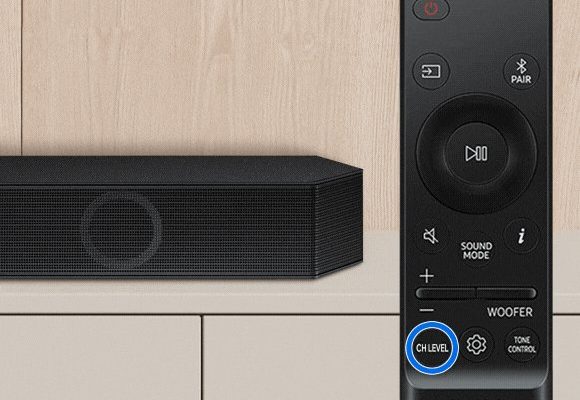
When it comes to living rooms these days, “smart” might as well be the middle name of every device. Your Samsung soundbar probably came with its own slim little remote, maybe with just a couple of buttons for volume and source input. Your smart TV, whether it’s Samsung or another brand, runs its own show. But do these remotes talk to each other? Or are they operating in parallel universes? Let’s peel this puzzle apart, step by step, so that you can finally have one less remote lurking between your couch cushions.
The Basics: How Samsung Soundbar Remotes Communicate
Here’s the thing: a Samsung soundbar remote is designed to control the soundbar, and it usually does this using either infrared (IR) or Bluetooth. IR is a bit old-school, like pointing a laser pointer at your cat—but it gets the job done if you have a direct line of sight. Bluetooth is more modern and doesn’t care if there are a couple of magazines or a bowl of popcorn in the way.
Now, most Samsung smart TVs also use IR or Bluetooth for their remotes. That sounds promising, right? Unfortunately, just because both remotes use similar technology doesn’t mean they’ll automatically sync up or work together. It’s like two people speaking different dialects—they might both be saying “hello,” but if they pronounce it differently, confusion happens.
If you look at your Samsung soundbar remote, you’ll notice the buttons are pretty straightforward: volume up, down, mute, sometimes a source toggle. Some fancy models even let you do a little more. But here’s an important point: these remotes are not programmed out of the box to control your TV. Their “language” is exclusively for the soundbar, unless you take a couple of extra steps.
Compatibility: When Will a Samsung Soundbar Remote Work With a Smart TV?
So, let’s cut to the chase. Can a Samsung soundbar remote control your smart TV? Short answer: not usually, **unless there’s a connection or sync method set up first**. If your TV and soundbar are connected via HDMI ARC (Audio Return Channel), things suddenly get a lot easier. That’s because HDMI ARC lets your TV and soundbar “talk” to each other, including passing volume commands from the TV remote to the soundbar.
But the main keyword here is HDMI ARC, not the soundbar remote itself. In almost all cases, your regular Samsung soundbar remote won’t control the TV—unless it’s a universal remote that’s designed to learn codes from other devices. Some newer Samsung remotes, like the One Remote, are built with special code libraries and can be paired to multiple devices, but the little soundbar remote that came in your box? That one’s pretty focused on its job.
So, if you want to use just one remote for both your soundbar and your smart TV, double-check if you have:
- A universal remote (not just the standard soundbar remote)
- HDMI ARC or eARC set up between your devices
- CEC (Consumer Electronics Control) enabled on both TV and soundbar (this lets them listen to each other’s commands)
Otherwise, the remote that came specifically with your Samsung soundbar will only adjust the soundbar, not the TV’s power, channels, or apps.
Pairing and Syncing: How to Connect a Samsung Soundbar Remote to a Smart TV
You might be wondering, “Is there a magic button sequence for pairing the soundbar remote to my TV?” I wish it were that easy. While you can pair Bluetooth remotes to certain devices (usually within the same brand family), a normal Samsung soundbar remote doesn’t have an official sync mode for smart TVs. Its pairing function is mainly for the soundbar itself, not the TV.
Here’s where things get interesting: if you have a *Samsung Smart TV* and a *Samsung soundbar*, and they’re connected via HDMI ARC, you can often use the TV remote to control the soundbar volume. Reverse? Not really. The soundbar remote remains loyal to the soundbar.
But for the tech-curious, there’s a workaround. Some universal remotes, or even Samsung’s higher-end “One Remote,” can learn the codes or automatically pair with multiple Samsung devices—including soundbars and TVs. That means you could retire the old soundbar remote in favor of a do-it-all controller.
Pro tip: If your setup isn’t responding as expected, double-check that HDMI-CEC (Samsung calls it Anynet+) is enabled on both devices. This lets them share commands—sometimes it just takes a quick toggling in the settings menu to make things click.
Troubleshooting: When Things Don’t Work as Planned
Okay, real talk—sometimes the tech gods just don’t cooperate. Maybe you set everything up, and still, nothing syncs. Or the volume lags, or the soundbar turns off randomly. It’s enough to make anyone want to give up and shout at the TV (which, sadly, isn’t voice-controlled unless you’ve got the fancy stuff).
Here are some basics to try before panic sets in:
- Batteries: Old or dying batteries can make remotes act weird. Swapping them out is the first step—seriously, don’t skip this.
- Obstacles: IR remotes require a clear path. Even a glass of water in the way can cause issues.
- Reset: Both soundbars and TVs sometimes just need a good old-fashioned reset. Unplug for a minute, then plug back in.
- Cables: Bad or loose HDMI cables are basically tech gremlins. Try a different HDMI port or cable to rule that out.
If it’s still not working, check for software updates on both your soundbar and your smart TV. Sometimes a firmware update fixes mysterious bugs, like remotes refusing to pair or sync up even when you’ve followed all the rules.
Universal Remotes vs Samsung Remotes: What’s the Real Difference?
Let me explain the big picture: a “universal remote” is basically the Swiss Army knife of the home theatre world. It’s programmed with codes for loads of brands and devices. A Samsung soundbar remote, by contrast, is more like a specialist—great at its job, but not trained to do everyone else’s work.
If your goal is to have one remote to rule them all (and stop fighting about who lost which one), here’s how they stack up:
- Universal Remotes can usually control TVs, soundbars, DVD players, streaming devices, and sometimes even smart lights—if you put in the codes or go through the pairing setup.
- Samsung Soundbar Remotes are generally for adjusting soundbar volume, changing sound modes, and switching sources. Some higher-end models can adjust connected Samsung devices, but not always reliably or with full control.
- Some Samsung “One Remotes” act as a universal option but still work best in all-Samsung setups.
So, if you have a mishmash of brands, a universal remote (like Logitech Harmony, which is popular, or BroadLink for smart homes) is usually the way to go. But for just Samsung devices? The right One Remote might solve your problems and help you declutter.
Advanced Features: Codes, Programming, and Customization
Now, if you’re the kind of person who likes getting under the hood (figuratively—I don’t recommend opening your remote), you’ll love this bit. Some remotes let you manually *program* them with specific codes for devices. This is often called “learning mode.” For Samsung soundbar remotes, though, this is rare—they don’t offer much in the way of code programming unless you upgrade to a universal model.
If you want your remote to do more, you’ll need to look for one that lets you:
- Input device codes (often found in the manual or online)
- Sync multiple devices through Bluetooth or IR learning
- Create custom macros (like “Movie Night” that turns on everything at once)
Honestly, programming a remote sounds complicated, but the payoff is having one controller for everything. It’s kind of magical—until a toddler hides it behind the couch cushions.
Alternatives: Using Apps and Voice Control Instead of Remotes
You might be thinking, “There’s got to be a smarter way.” Good news—there is. Many modern Samsung TVs and soundbars can be controlled via smartphone apps, like the Samsung SmartThings app. This lets your phone act as a super-remote, complete with touch controls, volume sliders, and even firmware update notifications.
There’s also voice control. If your setup is compatible, you could use Alexa, Google Assistant, or even Bixby (Samsung’s own voice assistant, which, honestly, is like the underappreciated cousin of Alexa). These options can change the volume, switch sources, or mute—all without ever touching a remote. It feels a bit like living in the future, and once you get used to it, you’ll miss it if you ever have to go back to the old button-mashing days.
Of course, these options depend on having Wi-Fi set up and compatible devices, but they’re getting more popular every year. And hey, one less remote to lose is always a win.
Summary Table: Samsung Soundbar Remote Compatibility With Smart TVs
Let’s make things super clear with a quick reference table:
| Remote Type | Controls Soundbar? | Controls TV? | Setup Required | Notes |
|---|---|---|---|---|
| Standard Samsung Soundbar Remote | Yes | No | None | Works out of the box for soundbar only |
| Samsung One Remote | Yes | Yes | Pairing/sync with TV & soundbar | Best for all-Samsung setups with HDMI ARC/CEC |
| Universal Remote | Yes | Yes | Code input or programming | Great for mixed-brand environments |
| SmartThings App | Yes | Yes | App install, Wi-Fi | Requires smartphone, can control both via app |
Final Thoughts: Making Remote Control Simple Again
Bringing it all together, here’s the deal: your Samsung soundbar remote, by itself, isn’t going to control your smart TV unless it’s a universal model or part of Samsung’s One Remote system. Most of the time, regular soundbar remotes are designed for just the soundbar—no more, no less. But don’t worry—it’s not a lost cause. With the right HDMI setup, maybe a universal remote, or even just your smartphone, you can make your home theater smarter and way less cluttered.
If you’re tired of hunting for the right controller, take a good look at what remotes you actually need—and which ones can easily be combined or replaced. Technology is supposed to make life simpler, not add another layer of confusion. And honestly, nothing ruins movie night faster than a remote mystery. So spend a few minutes setting things up the smart way, and you’ll thank yourself next time you just want to sit down, relax, and hit play—without a scavenger hunt first.
